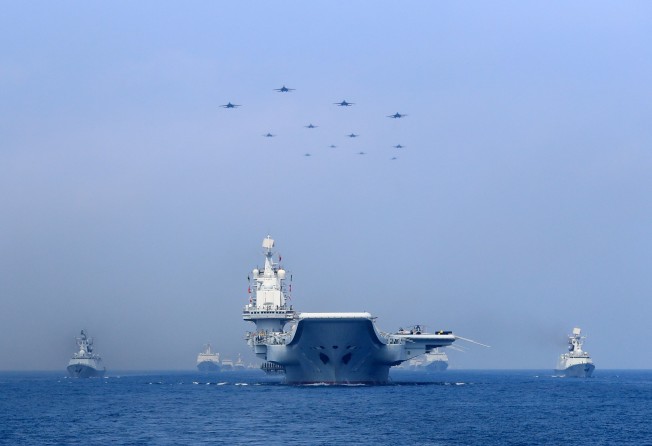This is not the time to add to tensions in South China Sea
- Beijing is working on a code of conduct with fellow sovereignty claimants in the disputed waters. Such cooperation, not stirring trouble and increasing firepower, should also be the aim of the United States in this time of crisis

The Covid-19 pandemic should be reason for the United States to set aside its rivalry with China and cooperate in working on a cure and vaccine, and when the crisis has ended, helping rebuild the global economy. But it is instead using the upheaval as cover for plans to strengthen its military presence in Asia to counter growing Chinese might. Paradoxically, US President Donald Trump’s administration has levelled the accusation against Beijing over its construction on islands in the disputed South China Sea. The US strategy is not what the region wants; increasing the risk of confrontation between the world’s leading powers only exacerbates uncertainties at a time when stability is imperative.
American military officials last week submitted a request to lawmakers for an extra US$20 billion to fortify the nation’s air, sea and ground operations in the region. The plan would cover funding through 2026 and include new radar warning systems, more missile air units, expanded training exercises and initiatives to strengthen the military capabilities of allies. The approach follows the position of hawks in the Trump administration that China, along with Russia, are Washington’s biggest geopolitical threats.
That policy has involved a ratcheting-up of American naval and air force operations in East Asia, with the focus being on the South China Sea and Taiwan. An American missile destroyer sailed through the Taiwan Strait and a US Navy EP-3E reconnaissance aircraft flew south of the island at the weekend, days after three Chinese aircraft flew over the island’s southwest in pursuit of another US surveillance plane. Taiwanese warships were scrambled on Saturday night to monitor the Chinese aircraft carrier the Liaoning and five support vessels that sailed through the Miyako Strait near Okinawa before heading south. US warships went through disputed waters claimed by Beijing and various Southeast Asian countries eight times last year, three more than in 2018, raising the risk of military confrontation.
A Chinese coastguard vessel and a Vietnamese fishing boat collided near the disputed Paracel Islands, known as the Xisha by China, earlier this month; eight fishermen were dumped into the sea as their ship sank, but were rescued by the Chinese. The US State Department saw the accident as a chance to make diplomatic capital, calling on Beijing to “remain focused on supporting international efforts to combat the global pandemic”. It also said that since the outbreak began, Beijing had announced new research stations on its military bases on two disputed South China Sea reefs. China is working on a code of conduct with fellow sovereignty claimants to ease tensions. Such cooperation, not stirring trouble and increasing firepower, should also be the aim of the US.